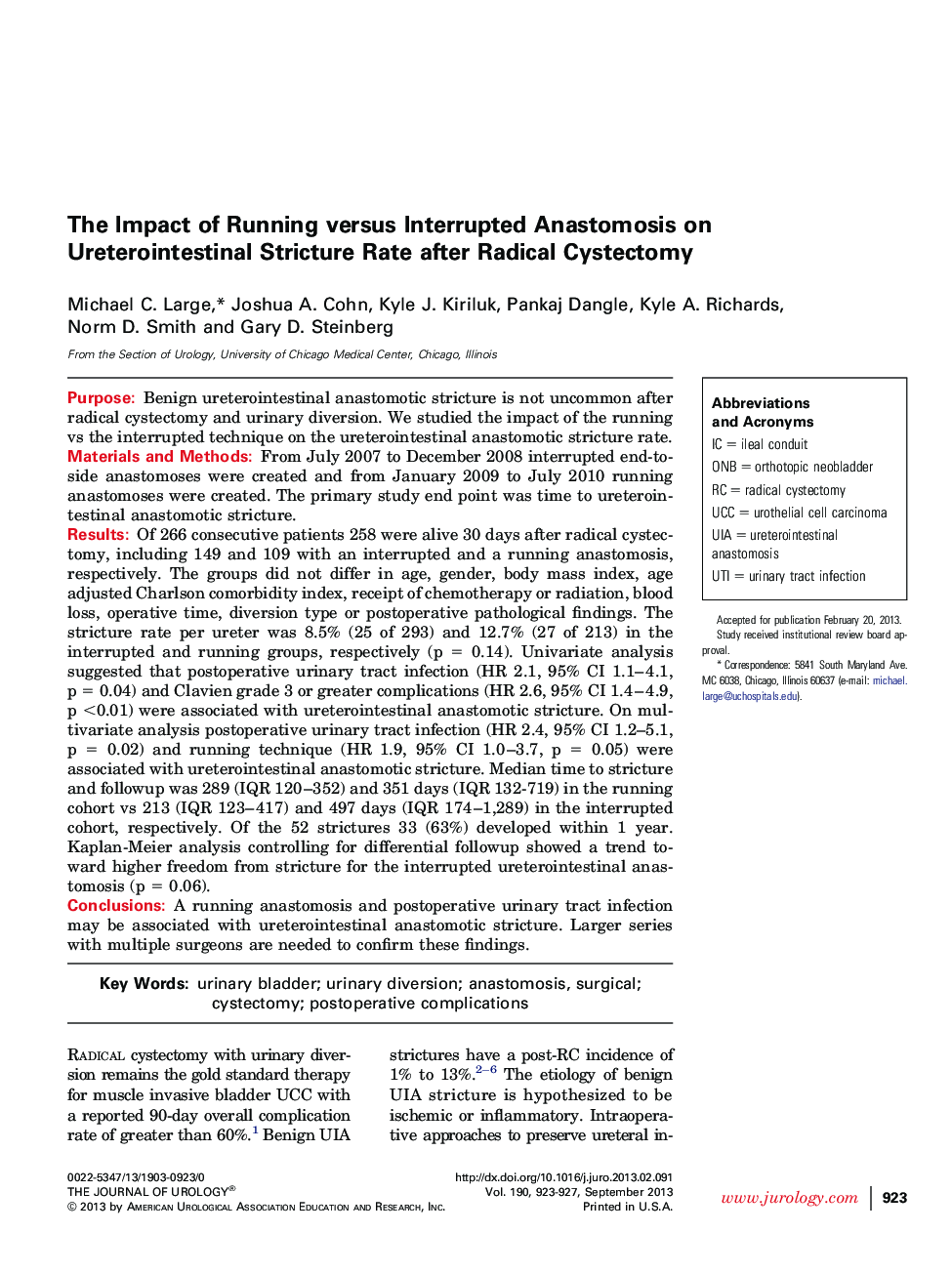| کد مقاله | کد نشریه | سال انتشار | مقاله انگلیسی | نسخه تمام متن |
|---|---|---|---|---|
| 3862506 | 1598915 | 2013 | 5 صفحه PDF | دانلود رایگان |

PurposeBenign ureterointestinal anastomotic stricture is not uncommon after radical cystectomy and urinary diversion. We studied the impact of the running vs the interrupted technique on the ureterointestinal anastomotic stricture rate.Materials and MethodsFrom July 2007 to December 2008 interrupted end-to-side anastomoses were created and from January 2009 to July 2010 running anastomoses were created. The primary study end point was time to ureterointestinal anastomotic stricture.ResultsOf 266 consecutive patients 258 were alive 30 days after radical cystectomy, including 149 and 109 with an interrupted and a running anastomosis, respectively. The groups did not differ in age, gender, body mass index, age adjusted Charlson comorbidity index, receipt of chemotherapy or radiation, blood loss, operative time, diversion type or postoperative pathological findings. The stricture rate per ureter was 8.5% (25 of 293) and 12.7% (27 of 213) in the interrupted and running groups, respectively (p = 0.14). Univariate analysis suggested that postoperative urinary tract infection (HR 2.1, 95% CI 1.1–4.1, p = 0.04) and Clavien grade 3 or greater complications (HR 2.6, 95% CI 1.4–4.9, p <0.01) were associated with ureterointestinal anastomotic stricture. On multivariate analysis postoperative urinary tract infection (HR 2.4, 95% CI 1.2–5.1, p = 0.02) and running technique (HR 1.9, 95% CI 1.0–3.7, p = 0.05) were associated with ureterointestinal anastomotic stricture. Median time to stricture and followup was 289 (IQR 120–352) and 351 days (IQR 132-719) in the running cohort vs 213 (IQR 123–417) and 497 days (IQR 174–1,289) in the interrupted cohort, respectively. Of the 52 strictures 33 (63%) developed within 1 year. Kaplan-Meier analysis controlling for differential followup showed a trend toward higher freedom from stricture for the interrupted ureterointestinal anastomosis (p = 0.06).ConclusionsA running anastomosis and postoperative urinary tract infection may be associated with ureterointestinal anastomotic stricture. Larger series with multiple surgeons are needed to confirm these findings.
Journal: The Journal of Urology - Volume 190, Issue 3, September 2013, Pages 923–927